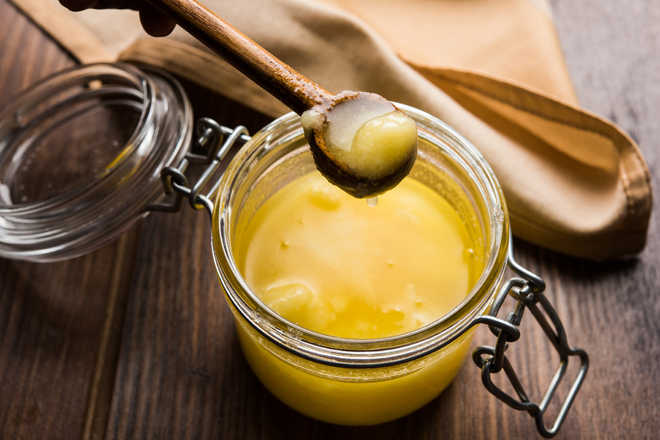Back to the basic
Guneet Kaur
Rice bran oil, olive oil and sunflower oil—having navigated through the plethora of cooking oils that the market has offered us over a period of time, there is a clear shift in consumer preference towards the good old ghee. And the good news is dieticians too have given it a thumb-up.
Pallavi Jassal, a dietician at Live Life More-Diet and Wellness Clinic, says, “Ghee provides high level of energy. It helps absorbing Vitamin of A, B, K and E. However, one should work out after consuming ghee.”
There are other dos and don’ts concerned with this cooking medium. “Certain things should be cooked in certain fats because the quality and quantity of fats. Two different fats, however, should not be mixed. Cooking with fats on high heat breaks the bonds between them. To avoid enzyme reaction, they can be refrigerated once opened,” Pallavi adds.
Madhu Sharma runs a private clinic called Diet for Life. “We needed polysaturated, monosaturted, saturated fats in 1:1:1 ratio by the body. They differ in composition of fatty acids. Cooking involves heating the fat up-this oxidises the fats and their composition changes. Re-heating oil (trans fats) in which food was cooked previously can result in inflammations-the bonds between the fatty acids are broken. Used oil should not be re-used,” says Madhu.
According to experts no single oil is complete by itself. A family of four members should consume 2 -2.5 litres of oil in a month. A member, hence can intake 500-600 ml per month.
Sunita Malhotra, chief dietician at PGI, says 20-30 per cent of calorie intake comes from oils. “Oils and fats can be divided in two categories broadly. Visible is the one which we add to cooking, invisible is the one present in food already. An average person should take 3-4 teaspoons per day. As many as 55 per cent of calories come from complex carbohydrates and about 15-20 per cent from proteins. The rest comes from fats. Ghee is a saturated fatty acid and a gram of fat contains nine calories.”










